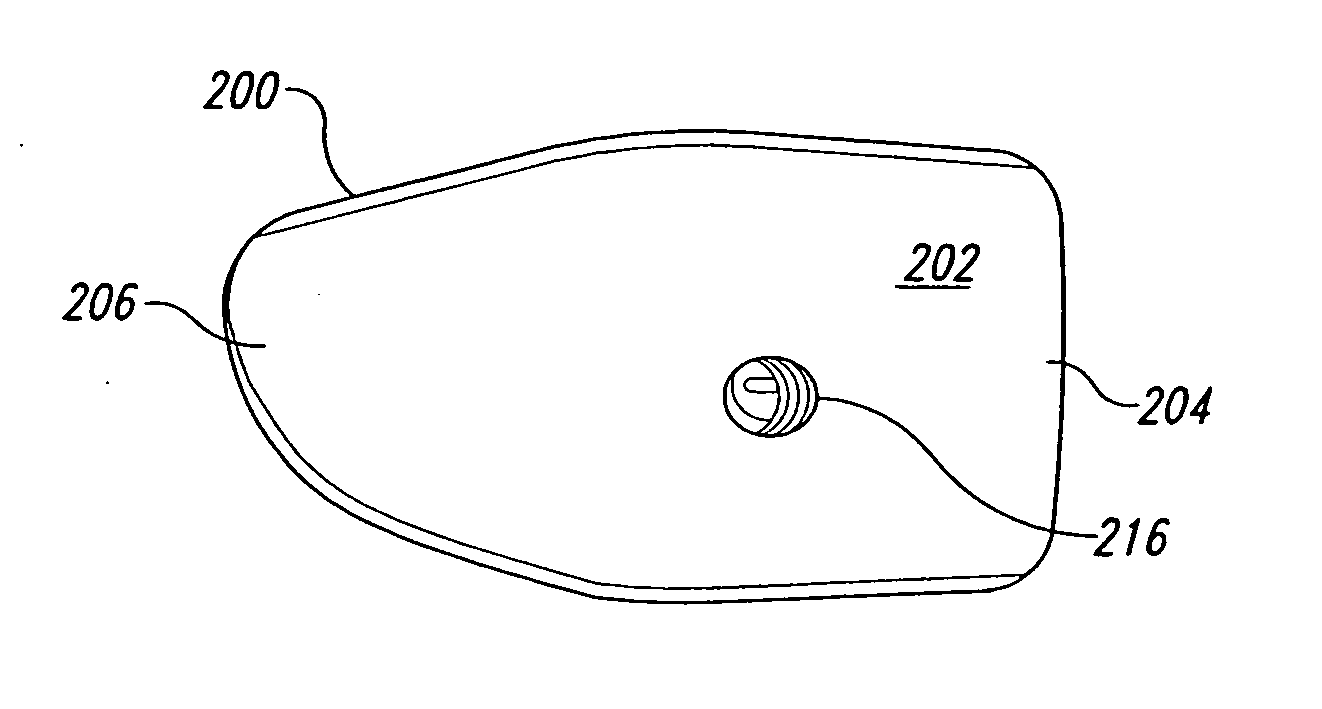Instruments and methods for use in performing knee surgery
a knee surgery and instrument technology, applied in the field of surgical instruments and methods, can solve the problems of removing more bone, multiple cuts, etc., and achieve the effect of avoiding excessive bone removal
- Summary
- Abstract
- Description
- Claims
- Application Information
AI Technical Summary
Benefits of technology
Problems solved by technology
Method used
Image
Examples
Embodiment Construction
[0060] The present invention is generally directed toward instruments for use during knee replacement procedures, and toward methods of using the same. Several embodiments of the invention may allow a medical practitioner to perform a complete unicompartmental knee replacement through a relatively small incision with reduced trauma to the bone and soft tissues, and accordingly may reduce the morbidity, pain and recuperation time to the patient, as well as reducing complications associated with intramedullary guide placement. Embodiments of the present invention may also allow the practitioner to accurately determine the ultimate alignment of the leg prior to making the horizontal, femoral and tibial cuts, and thus may reduce problems or inefficiencies related with the trial-and-error method of the prior art. Embodiments of the invention may also allow the practitioner to make both the horizontal, femoral and tibial cuts using a single cutting guide, and to prepare the distal femur f...
PUM
 Login to View More
Login to View More Abstract
Description
Claims
Application Information
 Login to View More
Login to View More - R&D
- Intellectual Property
- Life Sciences
- Materials
- Tech Scout
- Unparalleled Data Quality
- Higher Quality Content
- 60% Fewer Hallucinations
Browse by: Latest US Patents, China's latest patents, Technical Efficacy Thesaurus, Application Domain, Technology Topic, Popular Technical Reports.
© 2025 PatSnap. All rights reserved.Legal|Privacy policy|Modern Slavery Act Transparency Statement|Sitemap|About US| Contact US: help@patsnap.com



